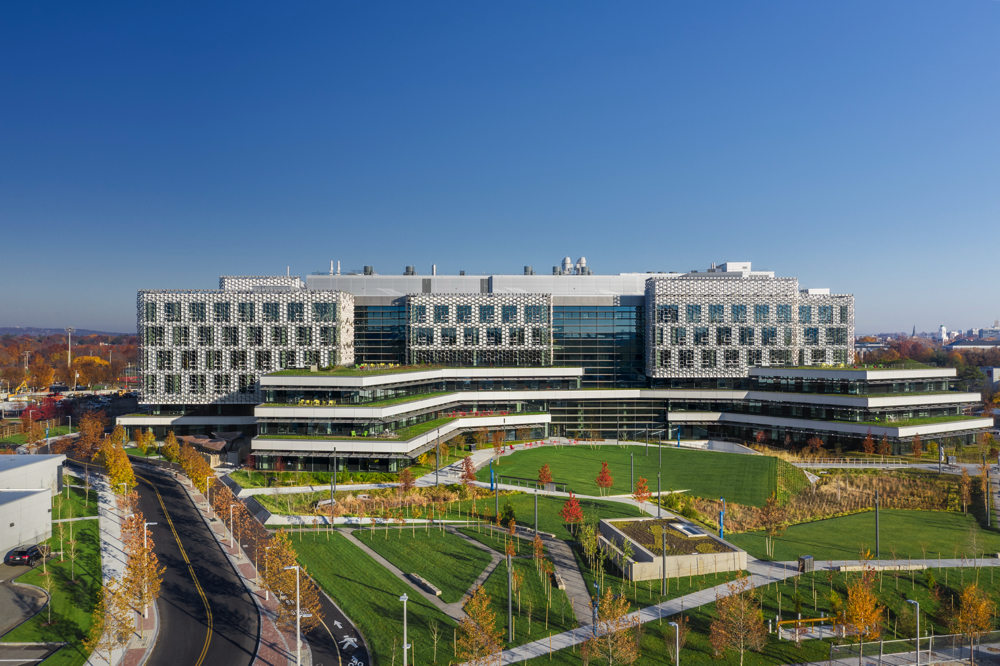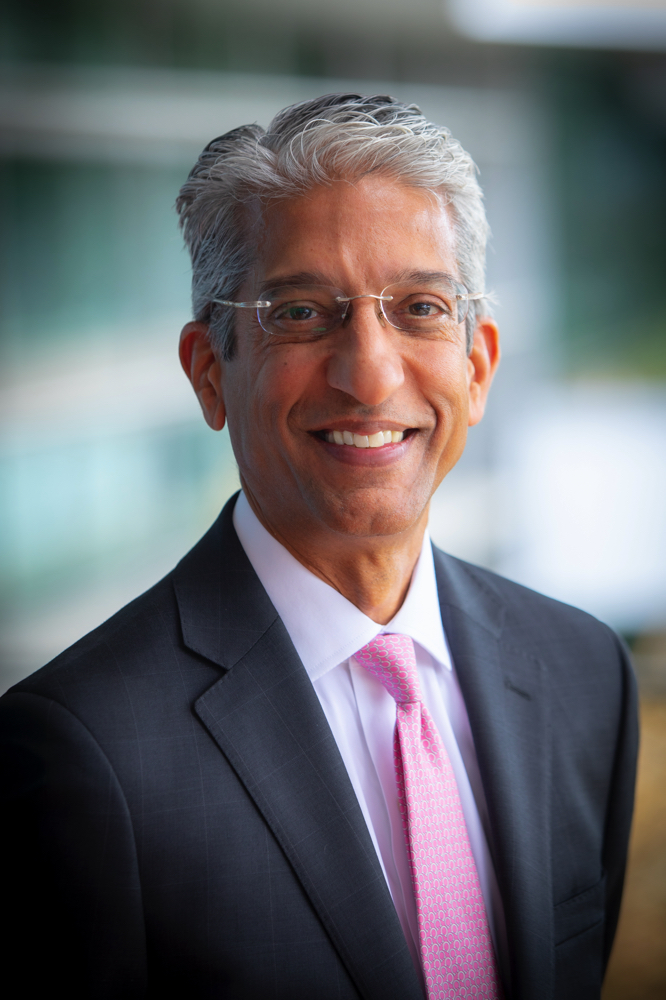Harvard’s already impressive ability to transform breakthroughs made in University labs into commercial products that could benefit society, especially in the biomedical realm, took another step forward today with the announcement of a new initiative that will support technology development in the physical sciences and engineering. The Office of Technology Development and the Harvard Paulson School of Engineering and Applied Sciences (SEAS) announced that they have jointly launched the Grid, which will expand funding, mentorship, and educational programming to accelerate selected science and engineering projects from across the University that demonstrate promise as potential startups. The new initiative will be housed in the Science and Engineering Complex (SEC) in Allston, where it will be led by executive director Paul Hayre, M.B.A. ’99, who began work at SEAS in August. Hayre will direct a team of onsite experts to provide mentoring in intellectual property strategy and licensing, startup formation, and fundraising—the business development aspects of launching a successful venture that most bench scientists know little about. He will also lead the development of educational programming in entrepreneurial skills for students at all levels, from undergraduates and graduate students to post-doctoral fellows. In an interview, Hayre said that he will initially focus on co-curricular programming, such as lectures, seminars, and conferences focused on entrepreneurship that are likely to appeal to audiences across the University. Hayre will report to both Paulson dean of SEAS Frank Doyle and to Harvard’s chief technology development officer, Isaac Kohlberg, who leads the Office of Technology Development (OTD).

Aerial photograph of the Science and Engineering Complex, where the Grid will be housed
Photograph courtesy of SEAS Communications
Kohlberg’s office helps advance University-developed technologies through both venture creation and licensing. In the past five years, more than 100 startups based on Harvard technologies have been launched, raising more than $4.4 billion in financing. To bridge what it calls the “academic-industry development gap,” the OTD manages the Blavatnik Biomedical Accelerator, and now will also jointly oversee the Harvard Grid. The new program will absorb and increase funds available through an existing, University-supported physical sciences and engineering accelerator that has helped launch 16 new startups since 2013, and that has handled sponsored research agreements and the licensing of technologies in this area. The new initiative is much more expansive in its aims by providing:
- Dollar awards to support faculty-led research projects deemed close to commercial viability, but needing extra time, resources, and support to reach that point
- Dedicated workspace in the SEC adjacent to faculty labs and University shared core facilities that will help selected teams advance their work
- Onsite advisors to provide guidance on all the aspects of startup formation and business development
- An educational component including workshops, lectures by subject matter experts, and other programming with broad appeal that will help students, postdocs, and faculty build entrepreneurship and translational skills; expose participants to leaders from relevant fields; and engage the community of startups, industry, investors, and alumni
Regular semester-based courses, winter-session programming, and panels that tap into a deep vein of alumni expertise in this area are expected to follow.
“The Harvard Grid will be a focal point for translational activities in the sciences and engineering,” said Doyle, in a statement. “It will help nurture a new generation of Harvard entrepreneurs and innovators and represents an important milestone in our mission to bring technology and talent to solve real-world problems.”
He added that a priority of the new initiative is to increase the diversity of founders by increasing access to resources and mentorship for women and members of groups traditionally underrepresented in measures of entrepreneurship and venture capital funding. Nor will the effort be limited to for-profit ventures. If a smart technological solution emerges that could contribute to a social problem, the Grid will help to create a public-good corporation or other entity to bring that to fruition.
Kohlberg, head of the OTD, noted that “Early-stage academic research often requires translational development that is beyond the scope of traditional government research funding. The Grid provides the infrastructure and environment for Harvard researchers to advance their innovations and create more impactful startups.”
A background in mentoring

Paul Hayre, inaugural executive director of the Grid
Photograph by Eliza Grinnell/SEAS Communications
Hayre, who will serve as the initiative’s inaugural director, received his undergraduate degree from Cornell, where he studied electrical engineering, and has been helping students and alums with early stage ideas both there and at HBS. For the last 10 years, he has worked principally as an early stage medical-device developer, and led startups such as Sano Diagnostics, focused on tissue repair and wound care, and Incasa, which used data science to analyze the economics of delivering care to patients at home. “I’ve been focused on early stage ideas almost from the onset of my career, sometimes in multi-billion-dollar companies, and often in traditional startups.” He said he has loved “participating in the ideation, in the molding and the tinkering, to get something right and try to figure out how to have impact.” Now he wants to “pay that forward,” building off his extensive volunteer work in mentoring—at places like the Rock Center for Entrepreneurship, for example—in his new role leading the Grid. The aim is to “figure out how to spin the flywheel faster,” to identify promising inventions earlier, “figure out how to give them legs earlier,” and then get them out into the real world as quickly as possible.
In Hayre’s first few months he expects to spend a lot of time “shoulder to shoulder” with researchers in their labs, asking graduate students in particular, what kind of support they need and when. “I think the Grid can…bring a lot of market validation to the table very early.”
Sam Liss, the executive director of strategic partnerships at OTD, notes that “for a project to be able to launch as a startup and have sophisticated investors, there’s a lot that needs to be done that is translational in nature. It’s not typically what might be covered in an NSF grant or a DARPA grant,” which are the hurdles most familiar to academics. “If there’s a team that is thinking of launching a startup, we might talk to a venture capitalist, often an alum,” and ask whether the project has a reasonable chance of launching as a startup. They might say, “‘you have to gather more data, you have to build a more refined prototype; they’ll be very specific, in terms of what would need to be in place,” to succeed, says Liss. Those are the kinds of gaps that accelerator funds address.
In 2019, OTD organized a trip to California at which Harvard science and engineering startups were presented to alumni venture capitalists and leaders in technology companies, and Liss says “it was an eye-opener” for both the alumni and for OTD. “That was the genesis of thinking about the Grid,” and the moment he realized that “if we defined a program that was more ambitious, had greater resources, we could have some really amazing results.”
Certainly, the Grid is launching into the midst of an innovation hub. Harvard Business School, the Harvard i-Lab, the Pagliuca Harvard Life Lab, and imminently, the Enterprise Research Campus, are all close neighbors.
“We’re in an incredible ecosystem with resources right at our doorstep. So if we don’t have it in the lab, we don’t have it in the building,” says Liss, “there is an outside entity that can help us do it. Often, all it takes is a little bit of money. That’s the essential gap that the Grid accelerator fills.”









